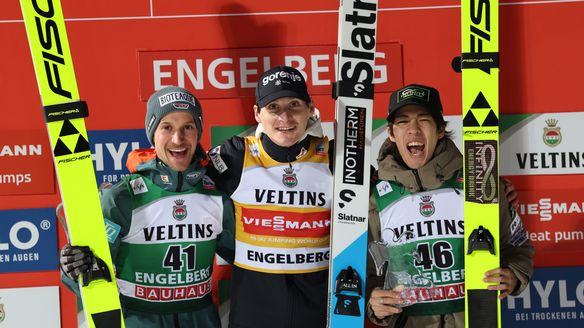FIS Ski Jumping Committee reviews equipment rules aiming to enhance athlete safety
Sep 26, 2025·Ski Jumping
The FIS Ski Jumping Committee convened on Wednesday in Zurich for the yearly Autumn Meetings, a forum for representatives of National Ski Associations and athletes to hold in-depth discussions about the key points related to the upcoming 2025/26 season of Ski Jumping and Nordic Combined.
Among many important topics − such as the confirmation of yellow and red cards as a mechanism to deal with equipment-related infractions – one dominated the agenda: athlete safety.
A few days ago, three athletes – three women – suffered serious injuries during a FIS Summer Grand Prix event held at the Predazzo Ski Jumping stadium, where the Winter Olympic Games Milano-Cortina 2026 competitions will take place next February.
The injuries highlighted the need for slight adaptations to the equipment regulations that had been decided upon earlier this year, during the Spring Meetings, by the same committee, and also adopted by the Nordic Combined Committee.
These changes relate to the suit measurements − more specifically, to the tolerance regarding how much the suit is allowed to be larger than an athlete’s body. In other words, how much loose fabric of the jumping suit can be in contact with the air midflight and, with that, enhance aerodynamics.
Up until now, men’s and women’s suits had to be between 2cm and 4cm larger than the athlete’s body circumference at any point of the body. This Wednesday, the Ski Jumping Committee approved a revised version of the regulations, per which for women’s competitions only:
the suit must be between 2cm and 5cm larger than the athlete's body circumference from the armpit to the knee at any point;
the sleeve of the suit, specifically, must be between 2cm and 4cm larger than the athlete's body circumference at any point, and the length of the sleeve must not be shorter than 5cm (as opposed to 3cm previously);
the suit crotch can be measured up to 2cm below the body crotch height.
The adaptations seem subtle but can have a significant effect on how athletes manage to gain more control midflight.
“This summer, it became clear that, while the men adapted well to the new suit parameters, the women had a harder time doing that, which resulted in way too much vertical speed at the landings. With women's suits a little bit bigger, they will have a little more space to fly on, which means a better feeling coming from the table. This will cause them to fly forward faster and, with that, the vertical speed at landing decreases. This, as a consequence, generates less pressure on the joints. It’s all about the beauty of this sport: to jump far, yes, but to do so safely,” says Damjan.
The updated suit regulations will be submitted to the FIS Council for approval at its next meeting, on 21 October, in a way that they should come into force prior to the final women’s event of the FIS Summer Grand Prix, in Klingenthal (GER), on 25 and 26 October.

)
)

